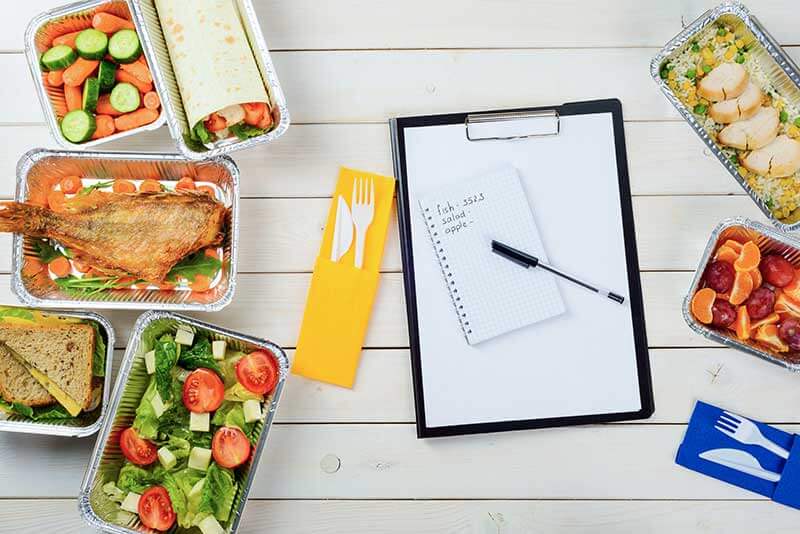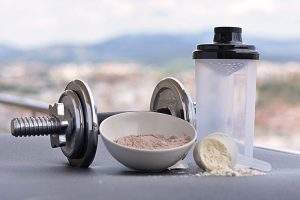Hitting your goal weight is incredible, but then what? The next step is calculating your maintenance calories. Your maintenance calories will help you to – you guessed it – maintain your weight.
Consuming a healthy amount of calories from a variety of foods is essential for feeling, looking and performing at your best. However, if you haven’t worked out just yet what your optimal calorie count should be, staying on track can be a tricky task. Are you under, or over-consuming? Who knows unless you keep tabs on your diet.
Let’s take a look at how to calculate maintenance calories and why it matters in the first place.
What is calorie maintenance?

Everything we eat and drink has a calorie count, and when added up, it goes towards your body’s energy expenditure. Whether you’re working out or sitting on the couch, our bodies require a certain amount of energy to perform. Muscle movement, energy conversion and cell growth are all basic functions that require energy – sourced from food.
The energy your body requires to do these everyday tasks is known as maintenance calories – or TDEE – your total daily energy expenditure.
Also Read: Best Compound Exercises for Beginner Lifters
Whether you’re bulking up, looking to gain muscle or burn fat, knowing how calorie maintenance works is pretty important. If you’re consuming just the right amount of calories that allows your body to function on a daily basis, you won’t lose or gain fat, nor muscle. If you’ve reached your goal weight and now want to maintain it, calorie maintenance is your key to sticking where you are.
When you’re eating more calories than your calorie maintenance level, there’s an opportunity to put on fat or build muscle. At the other end of the scale, you can lose weight if you decrease your calorie intake to below the maintenance level. In order to meet your weight goals, you need to find the right energy balance and be open to making slight adjustments accordingly.
One of the most important parts of calculating your maintenance calories is remembering that everyone is different. That’s right, there is no one-size-fits-all calorie count. This is because we all have different calorie maintenance requirements, we all differ in size and activity levels.
How can you calculate maintenance calories?
Before you restrict yourself too much or over-consume, you need to know your TDEE, or how much energy your body really needs. This depends on your body’s basic energy levels (known as basal metabolic rate, or BMR) and your activity level.
Also Read: 21 high protein foods you should be eating
While your BMR is predominantly based on your weight and height, TDEE is a little more complex. Your typical activity level includes exercise, sports and other physical activities, as well as your habits – such as fidgeting or constant pacing as you work for example.
When put together, both your exercise habits and non-exercise activity thermogenesis (NEAT) count towards your activity level.
Let’s look at TDEE a little more. To calculate this number you need to multiply your weight in pounds by 10 (if female) and 11 (if male). This figure will tell you how many calories your body needs to do the basics – your BMR.
Of course, the basic calories aren’t going to see you through your heavy workouts! Next, you need to calculate how much your level of physical activity impacts how much energy you require. To make things a little easier, use the following chart to work out your multiplier:
- You’re relatively stationary on an average day: 1.3 for women or 1.3 for men
- Your average day typically includes light activity: 1.5 for women or 1.6 for men
- Most days of the week you do moderate exercise: 1.6 for women or 1.7 for men
- You’re pretty active on an average day: 1.9 for women or 2.1 for men
- You’re very active throughout the average day: 2.2 for women or 2.4 for men
Use this multiplier and apply it to your BMR. This will tell you how many calories your body needs to undergo your daily lifestyle – or your maintenance calories.
Don’t get too worked up with the exact figure and its consistency. Very few people’s maintenance calories are set in stone – we advise taking the time to recalculate them occasionally. If you’re looking to gain muscle or lose weight, your calorie maintenance may change weekly.
Should you use an app to track your maintenance calories?

Yes – definitely! The math alone can be a little confusing at first, and with so many numbers swimming around it can be easy to feel overwhelmed. Whether you’re looking to bulk up or slim down, keeping track of your maintenance calories can help you stay on track.
Also Read: Should you take pre-workout before a run?
Using an app can help you see what you’re eating and the number of calories you’re consuming – plus, an app on your phone is a lot easier than a spreadsheet! There are other perks to an app, too. Many are designed to track calories throughout the day, helping you to stay consistent with your calorie maintenance throughout the week.
The majority of calorie tracking apps are quite similar, simply enter your maintenance calorie calculation and this will be your target calorie count for the day. As you log what you’re eating, you’ll be able to see how far or how close you are to hitting your daily goal. Many will also allow you to set goals for fats, carbs and proteins, so you can keep track in all areas of your food.
Many app, such as MyFitnessPal have food libraries to search from, or the ability to scan barcodes. This makes it quick and easy to track what you’ve eaten for each meal. In a few taps, you’ll be well on your way to knowing what your calorie levels are every day. Plus, with the ability to save meals and recipes, if your breakfast is the same each day, you can save time with a favorites section.
Don’t forget, those pesky snacks (I know, they’re tempting) and drinks count too. For the most accuracy, track it all.
Whether you’re looking to bulk up, lose weight or simply maintain your weight, seeing how you’re doing over time will help you stay consistent. Some apps even help you monitor your eating habits and identify key ones. When it comes to calorie maintenance, it’s about those long-term goals!
A little math here and there to calculate your maintenance calories doesn’t have to feel like school (or guess!) work. With the right calorie maintenance goal and an app by your side, you can achieve the best balance for your body and weight goals.











